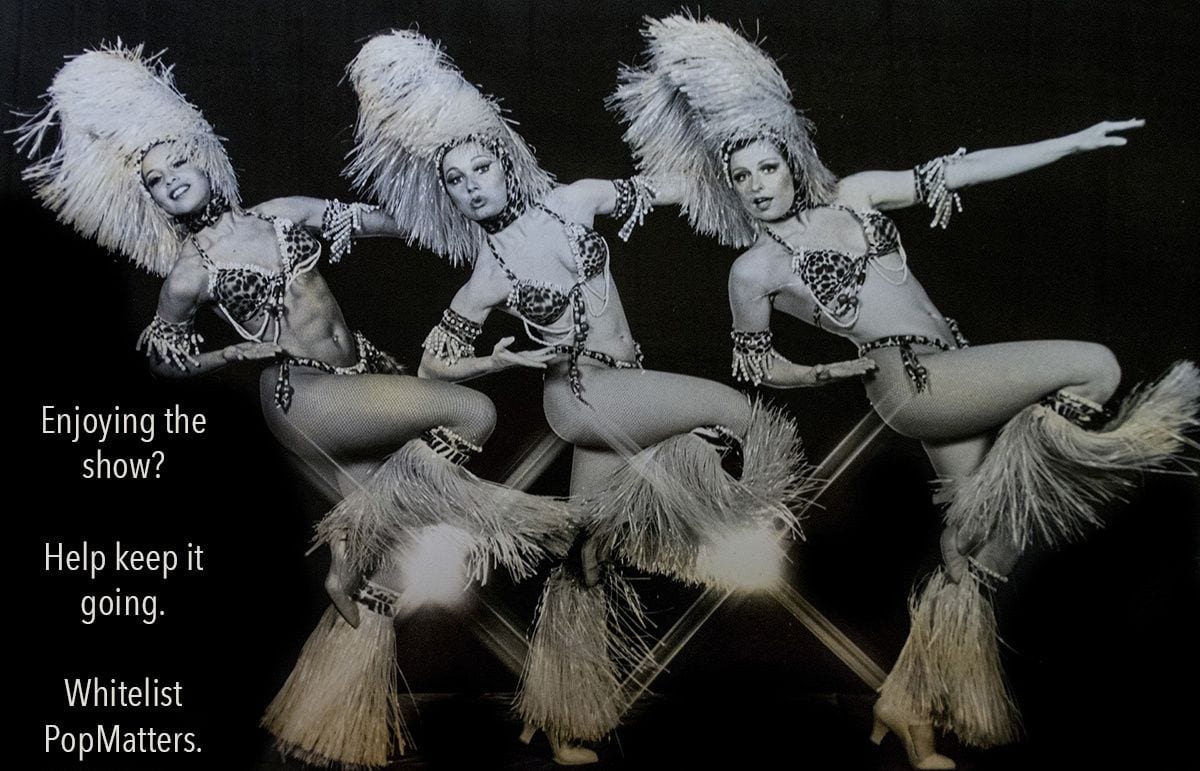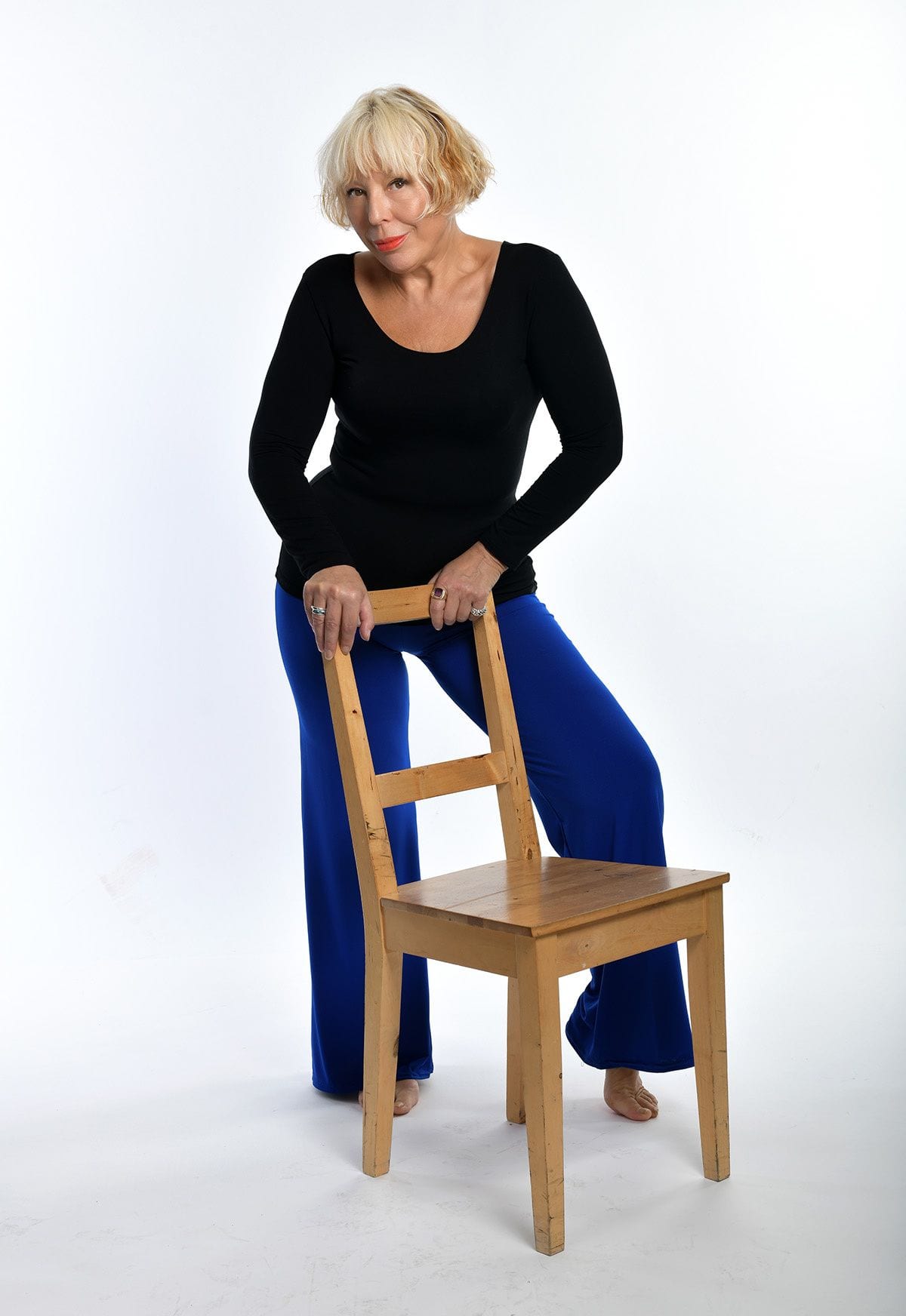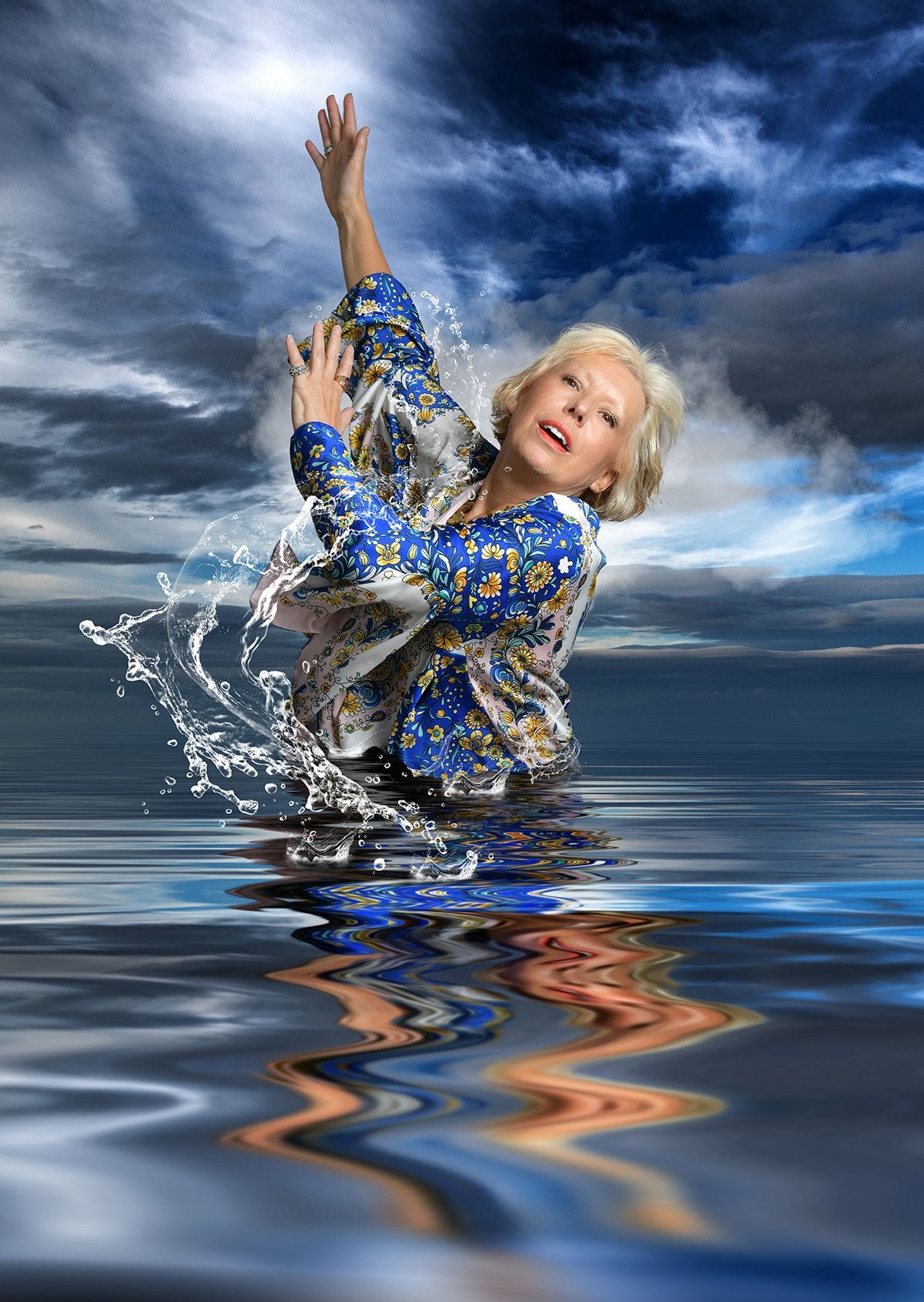
Barb Jungr‘s singular career has taken her from the British alternative cabaret scene of the late 1970s and early ’80s to the African continent, and from New York to Berlin. It has encompassed acclaimed themed shows like Hell Bent and Heaven Bound and Killing Me Softly, pantomimes and other theatre pieces, and programmes dedicated to the work of artists as diverse as Jacques Brel, Bob Dylan, Nina Simone, Leonard Cohen, the Beatles, and Sting.
It’s for these latter shows and albums that Jungr is now most widely known and celebrated. With her expressive voice, superb diction, and dynamic, physical, funny, and intense performance style, she has the ability to dig deeply into familiar lyrics and make iconic songs resonate in new ways, effectively turning them into one-act plays.
As its title suggests, Jungr’s new album Bob, Brel, & Me finds her returning to the work of two of her favourite composers and combining a selection of their songs with some of her own co-written compositions. Startlingly fresh takes on Dylan’s “Mr. Tambourine Man”, “Simple Twist of Fate”, and “This Wheel’s On Fire” rub up against exquisite and powerful treatments of Brel’s “To See a Friend Break Down and Cry” and “The Cathedral”. Fine original songs like “Incurable Romantic” and “No One Else Could Ever Wear Your Shoes”, written with Jungr’s longtime collaborator Michael Parker who died in 2017, complete the set. The result is a thrilling collection that ranks among Jungr’s finest achievements on record.
Jungr talks with PopMatters about the choice of material on the album, her collaborators, the current “sick” condition of the music industry, the joy of live performance, and the importance of paying attention to “what the song asks for”.
Dancers by hsvbooth (Pixabay License / Pixabay)
Alex Ramon: Brel and, in particular, Dylan, have been touchstones for you for many years. Why did you want to bring their work together on this album, along with some of your own compositions?
Barb Jungr: It was the right time to return to the canons of both of these titans of my soul. And then I thought about all the writing I’ve been doing for years and I thought, what about adding that to the mix? Obviously, Brel and Dylan are both men and I get asked again and again — always male writers? So I took, for the most part, recent songs of mine, and this is the result.
Do the same qualities draw you to Dylan and Brel’s work, and how would you describe their differences and similarities as writers/composers? For you as a singer, what are the different demands, pleasures, challenges of performing their songs?
That’s an interesting question because its going to be a yes and no answer! They both explore the human condition and the condition of emotion in a particular way. They’re both masters of language and subtlety, which is a challenge, as the songs often reveal themselves very slowly. There are layers and layers of meaning, one need lay nothing on top of those lyrics at all.
The heavy lifting is not in trying to “show” them, but in trying not to show them so that the words allow themselves to inform us of their intentions, texts and subtexts. The demand is to stay out of the way and to use all the technique possible to let the sentences and thoughts find their own rhythms with the arrangements.
The challenges are to remain inside the song with utter and complete focus, and to add and subtract nothing. Simply to be, singing, a vessel for the words and music: the best vessel possible at any time of performance or recording or whatever. But Brel explores something particularly European for me, and Dylan, something particularly American, and that’s the divergence and the excitement in combining them.
I took Bob and Brel together to the US for the first solo shows I did there in 2002 at The Flea Theater, downtown New York. And that was something, then. So this really is a DNA swerve — a return, and yet not to the same place, nor indeed the same songs.
Photo: Steve Ullathorne / Courtesy of Publicity 4 / Barb Jungr.co.uk
The arrangements of the Dylan songs are very fresh and creative. Do you and the arranger/musicians Jamie Safir and Jenny Carr go in with specific ideas about how you’ll approach a song, or do the arrangements emerge organically through being in the studio with the musicians?
I worked with both Jenny and Jamie at first separately and then together in the room on the arrangements before they ever went in front of the other musicians. Then we took them in front of an audience with just the three of us to run them and see how they felt and make any subsequent changes before we went into the rehearsal room with Rod [Youngs] on drums and Davide [Mantovani] on bass. We added the sax, trumpet and cello in the recording studio. But by then we knew what we wanted.
Jamie did the choral arrangement for “If We Only Had Love”, and we took it to the Fourth Choir [the London-based LGBTQ+ choir] and then we recorded it in St. Silas the Mariner Church for the acoustic ,which was a joy.
Both Jenny and Jamie know me and we talk about the feels and then spend a while on running everything around to find what the song asks for. It’s always about what the song asks for. What does the song want? What questions do the lyrics pose that the arrangements can help answer?
You give “This Wheel’s On Fire” such a dramatic, incantory quality. Tell me about your vision for this one.
For me this song has always been about the three witches on the moors, and, thank you, absolutely an incantation. I loved it when first recorded by Julie Driscoll as she was then and Brian Augur and the Trinity. I think she led me on this path, I just went further out onto the headland with it.
Wordsworth, Brel… they see the concept of God in nature. I resonate utterly with that. Trees, the spirits of the land, of the waterfalls and rivers, of the dry earth. At this time in our journey as human beings, we need incantation more than ever before. You can find me up on the moor. I’ll be the one with the cauldron.
In contrast to the more elaborate arrangements for “One Too Many Mornings”, “Simple Twist of Fate” ,and “Mr. Tambourine Man”, you give “Buckets of Rain” a spare and quiet treatment. Why did you decide to approach this song in this way?
Well, it’s a quiet song. It spoke quietly, always. It’s a song of longing, to me, and it’s a late night song. It required that. Jamie came to this notion that the organ should take it and we thought just bass, with that, just that. It’s a great song to sing. I love it.
You commissioned new translations of Brel songs by Robb Johnson and they’re stunning. What do you like about Robb’s translations of Brel, and do you have some input in the translation process yourself?
Robb is brilliant. He is utterly responsible for my love of Brel’s work. He got me to see inside it and he introduced me to Des De Moor, who did alot of the earlier translations I used on Chansons – The Space In Between, the album I recorded for Linn Records in 2000.
Robb adores Brel’s writing and he gives so much of himself and to the work in his desire to convey the lyricism and the ugliness, the light and shade and subtlety, of Brel’s language. I have no input in it except to cheer and adore the results when the translations come from the font of Robb’s love of Jacques.
I find “The Cathedral” absolutely fascinating and very emotional. How did this song come to you, and what does it evoke for you?
I had wanted to have a crack at this before because it’s a dense and complex song and suddenly the time was right. Again, for those of us who come alive in the open air – with the endless sea, the thundering sky, the breeze on our skin – this is the clarion call. And we know that Brel sees the end, nearer than before, of his own personal trajectory.
So he has to put some things inside to sleep and some things in contrast are awakening in him and driving him towards the Marquise Islands. It’s his “Like a Rolling Stone”, I think. I suspect I’ll sing it for years before I even touch the skin of the meanings it contains.
Your delivery on “Jacky” is great – including a cheeky word that we don’t often hear in songs! What were the challenges of approaching this track, which is so well known in Scott Walker’s great version?
I’ve always loved this song and I’ve always known that hidden somewhere was something else lyrically. So I asked Robb to go for it and he did. It was so important to understand this feeling a person has for a self they barely recall and when they do, they barely recognise themselves in it, yet they somewhat love who and what they were, however ridiculous that now seems. That is a journey and a half.
Brel speaks of himself as a young, callow man. And finds himself both loving, and – with a raised eyebrow – perhaps a little bit despising, who he was.
“To See a Friend Break Down and Cry” is devastating, and certain lines bring you up short with their relevance, not least “No trace of my America survives”. Why was it important for you to include this song?
I know. Line after line, for me. I find “Of course the time went far too quickly” takes me apart. The way we feel love, in all its myriad forms, is not limited to lovers and family but to our kith and kin, our chosen families, our deepest friendships.
Brel’s inquiry into the depth of friendship is explored in songs too, of course, and I love that. I love that he has no fear of expressing those other forms of love.
Turning to your own songs, “Rise and Shine” is a vibrant, sassy opener. What was the inspiration for it?
Well, its vibrant and sassy but lyrically it’s what I call a “fuck you” song. There were a lot of them in old rhythm and blues.
Mike Lindup (with whom I wrote the songs for the Liver Birds Flying Home musical) had this couplet, “rise and shine the morning after wine”, and I took it and opened a door and the whole lyric came in a rush. I handed it to Mike and he came up with this beautiful Ray Charles vibe and I just went: Yes yes yes! It’s for anyone who’s seen through a lover’s nonsense and realised that they ought to open a bottle of wine and howl at the moon with joy because they’ve saved themselves.
Photo: Steve Ullathorne / Courtesy of Publicity 4 / Barb Jungr.co.uk
“Sometimes” is about Mabel Stark, the tiger trainer. When did you first hear about her and what made you decide she’d make a good subject for a song?
The composer Jonathan Cooper and I have written an entire opera about Mabel Stark. Jonathan turned me on to a fictionalisation of her life. We started to look at it and then we got hold of her original letters from the Circus archive in the US and read everything we could find – a lot – and looked at tigers. At that time there was one circus with wild cats still operating here and I managed to go and see it. All of this gave us the songs.
We are still working on it and I hope that one day we get the whole song cycle off the ground, because Jonathan and I have always felt super close to her and sometimes she sits on my shoulder and shouts at me: “where’s my bloody opera?”
Was revisiting “Noone Else Could Ever Wear Your Shoes” about paying tribute to Michael Parker, your long-time collaborator?
In a way it was. It was a song I have always felt has, and had, life beyond us. Michael having now gone, and my debt to him as a friend and musician… I cannot fathom the depth and height of that. He gave me so much. I sing it not just for him but for all our losses. But I do sing it for him, too, yes.
This album brings together musicians you’ve worked with at different points over the years, from Jenny Carr and Jamie Safir to Davide Mantovani, Pete Horsfall and Rod Youngs. Was it always your intention to collaborate with this group of musicians on this project?
No and yes….they all seemed to come into my mind and I had asked a few people whether they’d be keen. The ones who came back to me fast were the people I knew were on the page.
You mentioned the Fourth Choir, and their contribution to “If We Only Had Love” is beautiful. How did you hear about them and what made you decide to collaborate?
They came to me via Séamus McGrenera, who’s a friend, and I’d seen them perform. They are so terrific, and we’d mooted collaboration, so it was meant to be. There will be more collaboration with The Fourth Choir.
You’ve hinted that this could be your last album. Why?!
Oh, it takes so much out of you in this current climate to make anything — a book, a film… So I think — and to be fair I do say this after every single thing I make — that’s the last. I guess time will be the judge of this.
In an interview from almost 20 years ago, you said that: “In the West, we have lost the connection to the fundamental point of art: expression and celebration. Instead, art has become consumed by capitalist conceptions of moneymaking.” How do you feel about the condition of the music industrym and the way in which music tends to be “consumed” and experienced, these days?
To my mind, the condition of the music industry is very bloody sick and stupid in about equal measure. We used to earn a living, those of us who make music constantly – the jazz and folk communities, the touring musicians – and suddenly the people making money are streaming companies and Apple and bloody Spotify. The artists — who by the way make this stuff in the first place — get jack shit and it makes my blood boil. I think it’s gotten worse and worse and I hold those at the top of the “industry” absolutely responsible for this clusterfuck.
Seeing you perform live is an amazing experience and you seem to take so much pleasure in it. Does live performance still have the same excitement for you as when you started out? What defines a great live show?
I love every moment of working with live music. It’s soul enhancing. In tune. That’s what it means, literally, we become in tune with one another, both musicians and listeners. Our bodies vibrate together. This is communion. Truly communion. It has as much life force as walking along a cliff top or along a beach at dawn or listening to the roar of a waterfall.
You travel a lot to perform – in Berlin, New York, and all over the UK. Do you notice any differences in audiences in different countries and cities?
Small differences only for the most part; we are all people. We have the same needs and we share this planet and music unites us. I wish that were something that would sink in politically.
Aside from the album, do you have any other projects coming up this year?
I have several theatre projects in development. The Little Angel production of We‘re Going on a Bear Hunt, which I co-adapted with the wonderful Peter Glanville and wrote the songs for, tours throughout the autumn. I’ve co-written a new piece with Samantha Lane for The Little Angel called The Pixie and the Pudding, which will be their Christmas show. So I’m super excited about both of those.
Mike Lindup and I are working on a new project, and I’m working on something new with John McDaniel as well.
Finally, how has the experience of performing Bob, Brel, & Me live been so far, and what are you looking forward to about continuing your journey with these songs?
I am starting out with them and the joy that people are finding in them already is setting me on fire. I can’t wait to answer this question again in 20 years!
* * *
Bob, Brel, & Me is available from Kristalyn Records on 6 September.




